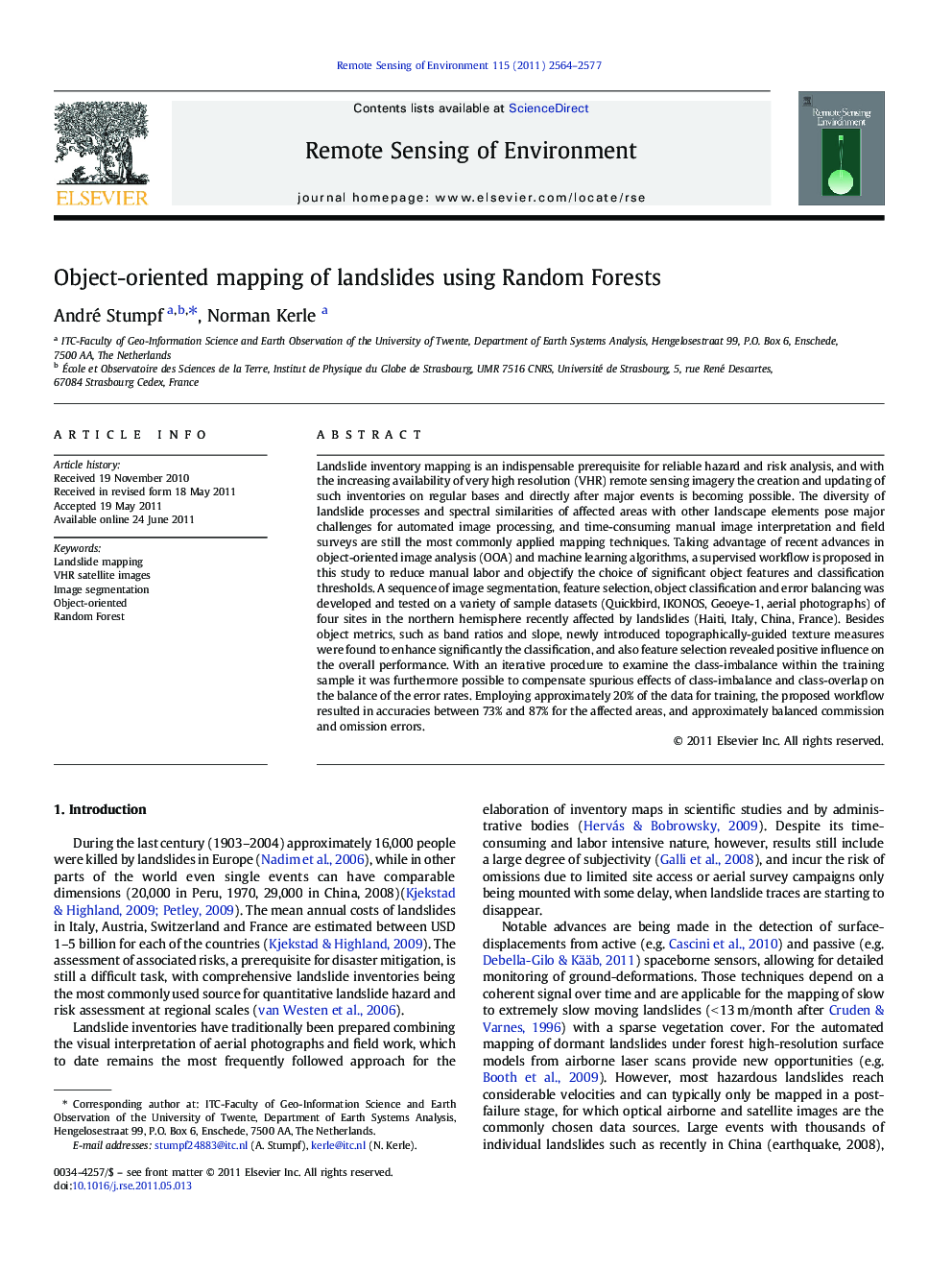| Article ID | Journal | Published Year | Pages | File Type |
|---|---|---|---|---|
| 4459304 | Remote Sensing of Environment | 2011 | 14 Pages |
Landslide inventory mapping is an indispensable prerequisite for reliable hazard and risk analysis, and with the increasing availability of very high resolution (VHR) remote sensing imagery the creation and updating of such inventories on regular bases and directly after major events is becoming possible. The diversity of landslide processes and spectral similarities of affected areas with other landscape elements pose major challenges for automated image processing, and time-consuming manual image interpretation and field surveys are still the most commonly applied mapping techniques. Taking advantage of recent advances in object-oriented image analysis (OOA) and machine learning algorithms, a supervised workflow is proposed in this study to reduce manual labor and objectify the choice of significant object features and classification thresholds. A sequence of image segmentation, feature selection, object classification and error balancing was developed and tested on a variety of sample datasets (Quickbird, IKONOS, Geoeye-1, aerial photographs) of four sites in the northern hemisphere recently affected by landslides (Haiti, Italy, China, France). Besides object metrics, such as band ratios and slope, newly introduced topographically-guided texture measures were found to enhance significantly the classification, and also feature selection revealed positive influence on the overall performance. With an iterative procedure to examine the class-imbalance within the training sample it was furthermore possible to compensate spurious effects of class-imbalance and class-overlap on the balance of the error rates. Employing approximately 20% of the data for training, the proposed workflow resulted in accuracies between 73% and 87% for the affected areas, and approximately balanced commission and omission errors.
Research highlights► Image segmentation and the Random Forest framework are combined for landslide mapping from different VHR remote sensing images. ► Newly introduced object features and feature selection enhance the classification accuracy. ► A scheme to account for unbalanced error rates is proposed and tested. ► The algorithm performs robustly with different types of input datasets. ► Employing 20% of the data for training, mapping accuracies between 73% and 87% were achieved.
